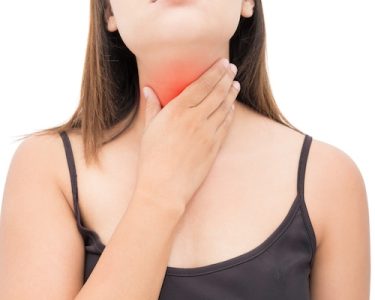Achalasia is a rare esophageal disorder that affects the ability of the lower esophageal sphincter (LES) to relax, making swallowing difficult. While medical treatments like balloon dilation, medication, or surgery can alleviate symptoms, diet modifications play a crucial role in improving swallowing and reducing discomfort. The Achalasia diet and the top foods that can help ease swallowing and maintain nutrition.
What is Achalasia?
Achalasia is a rare disorder of the esophagus, the tube that carries food from the throat to the stomach. It occurs when the muscles in the lower esophageal sphincter (LES) fail to relax properly during swallowing. As a result, food and liquids have difficulty passing into the stomach, leading to a variety of symptoms.
Key Features of Achalasia
- Dysfunction of the LES: The LES is a ring-like muscle that opens to allow food into the stomach. In achalasia, it remains tightly closed.
- Lack of Peristalsis: The esophagus loses its normal muscular contractions (peristalsis) needed to push food downward.
- Progressive Worsening: Symptoms typically develop gradually and worsen over time.
Common Symptoms
- Difficulty swallowing (dysphagia): A feeling that food is stuck in the chest or throat.
- Regurgitation: Food or liquids come back up into the throat.
- Chest pain: May be caused by spasms in the esophagus.
- Unintended weight loss: Due to difficulty eating.
- Heartburn-like symptoms: Though not caused by acid reflux.
Causes and Risk Factors
The exact cause of achalasia is not well understood. It may result from:
- Autoimmune damage to the nerves in the esophagus.
- Viral infections.
- Genetic predisposition (though rare).
Understanding Achalasia and Its Dietary Challenges
Achalasia primarily impacts the esophagus, leading to symptoms such as difficulty swallowing (dysphagia), chest pain, regurgitation of food, and unintended weight loss. These symptoms make it challenging to maintain proper nutrition.
A tailored Achalasia diet focuses on:
- Choosing foods that are easy to swallow.
- Reducing the risk of food impaction.
- Preventing malnutrition by including nutrient-dense options.
Top Foods to Eat on the Achalasia Diet
1. Soft and Moist Foods
Soft textures and moist preparations are easier to swallow and reduce strain on the esophagus. Some excellent options include:
Related Articles: Top Treatments for Type 2 Achalasia: A Guide to Managing Symptoms
- Mashed potatoes
- Scrambled eggs
- Yogurt or Greek yogurt
- Cottage cheese
2. Pureed and Blended Foods
Blending foods into smooth textures can make swallowing more manageable. Ideas include:
- Soups (pureed vegetable or chicken soup)
- Smoothies with fruits, vegetables, and protein powder
- Applesauce or pureed fruits like pears and peaches
3. Well-Cooked Vegetables
Steaming or boiling vegetables until soft can make them easier to consume. Some suitable choices are:
- Carrots
- Zucchini
- Squash
- Spinach
4. Lean Proteins in Soft Form
Protein is essential for overall health but can be hard to consume with achalasia. Opt for:
- Poached fish (e.g., salmon, cod)
- Ground turkey or chicken
- Tofu or silken tofu
- Soft beans or lentils
5. Whole Grains in Smooth Textures
Whole grains provide fiber but can be difficult to swallow in their unprocessed form. Instead, choose:
Related Articles: Life After Achalasia Surgery: Transform Your Digestive Health
- Oatmeal or cream of wheat
- Soft-cooked quinoa
- Rice pudding
6. Hydrating Foods and Fluids
Staying hydrated is critical for digestion and preventing food from sticking in the esophagus. Include:
- Broths or clear soups
- Watermelon or other water-rich fruits
- Herbal teas
- Electrolyte-rich drinks
Foods to Avoid
While the Achalasia diet emphasizes soft and easy-to-swallow foods, certain items can worsen symptoms:
- Dry or hard foods: Crackers, chips, or nuts can be difficult to swallow.
- Sticky foods: Peanut butter or caramel may get stuck in the esophagus.
- Fibrous raw vegetables: Raw carrots, celery, and broccoli can be hard to break down.
- Spicy or acidic foods: Citrus fruits, tomatoes, or chili may irritate the esophagus.
- Carbonated beverages: These can increase pressure in the esophagus.
Tips for Eating with Achalasia
Related Articles: Achalasia Cure Symptoms, Diagnosis Diet Treatment
- Eat Smaller Meals: Large portions can overwhelm the esophagus. Stick to smaller, more frequent meals.
- Chew Thoroughly: Chewing food well helps break it down, making swallowing easier.
- Stay Upright: Sit upright during meals and avoid lying down for at least an hour afterward.
- Experiment with Textures: Everyone with achalasia has unique tolerances. Experiment to find foods that work best for you.
- Stay Hydrated: Drinking water between bites can help clear the esophagus.
When to Consult a Doctor
While dietary changes can significantly help manage achalasia, they are not a cure. If symptoms persist or worsen, consult a healthcare provider. They may recommend additional treatments such as medication or surgical options.
Related Articles: 8 Herbal Treatments for Achalasia
Conclusion
Managing achalasia requires a thoughtful approach to diet. By focusing on soft, nutrient-rich, and easy-to-swallow foods, you can alleviate symptoms and maintain a healthy lifestyle. Remember, the Achalasia diet is about finding what works best for your body, so don’t hesitate to adapt these guidelines to suit your specific needs.




